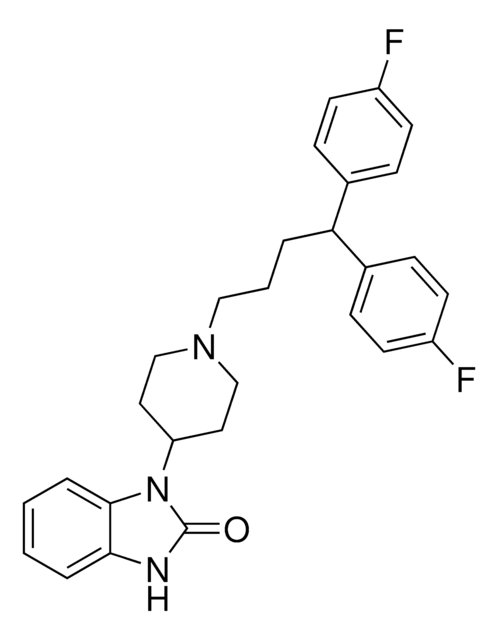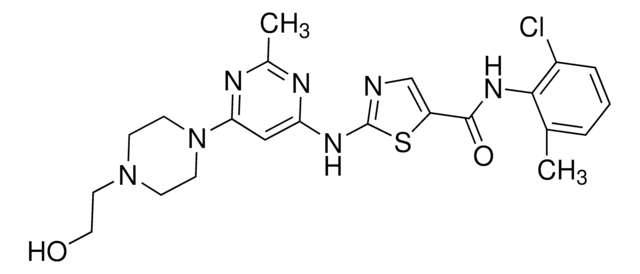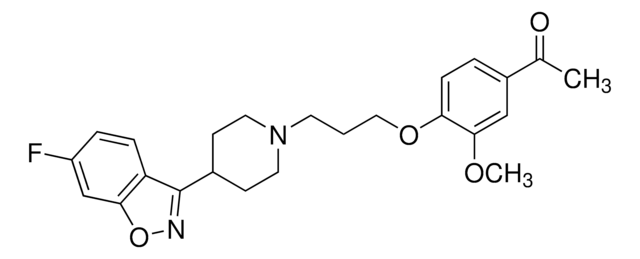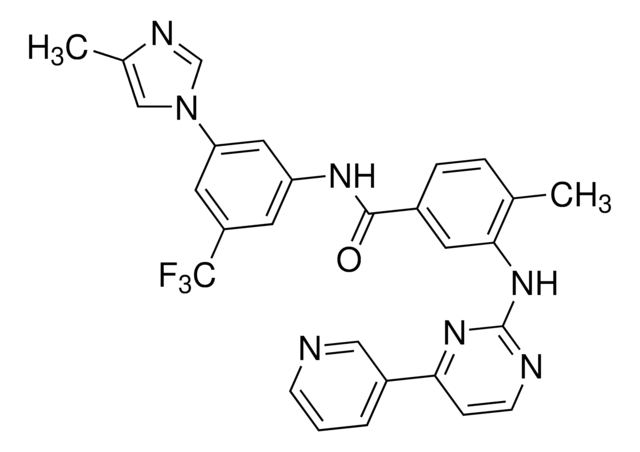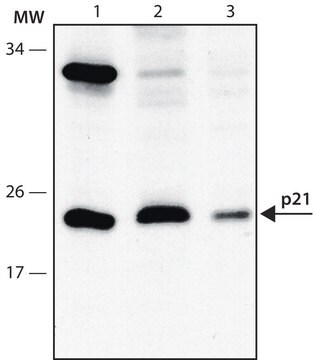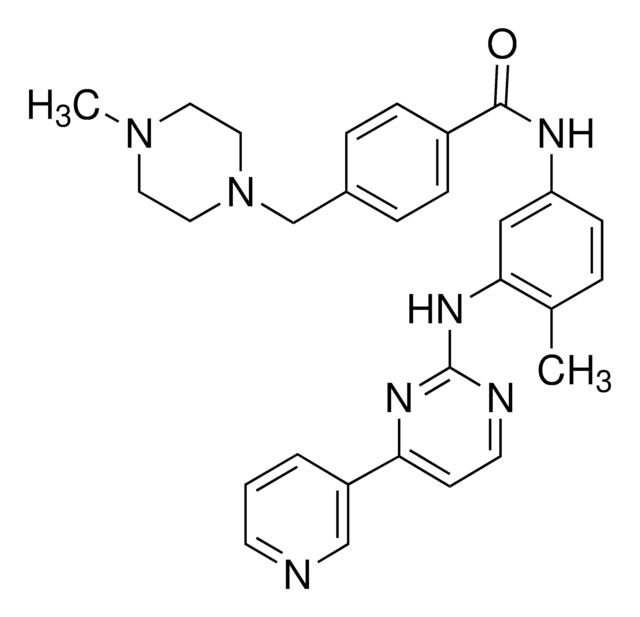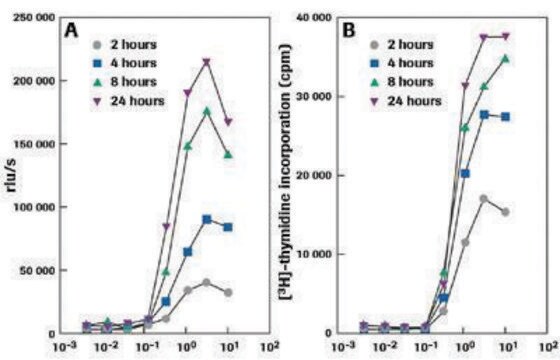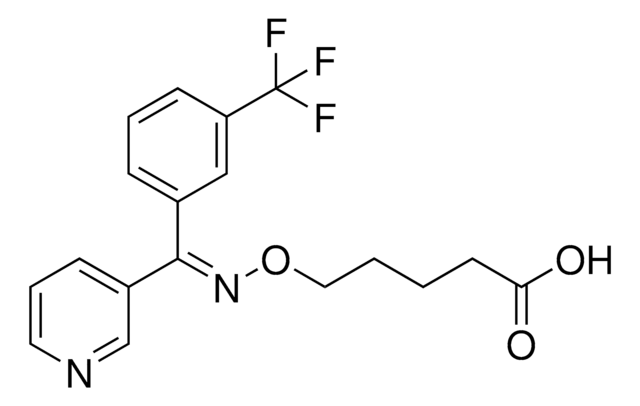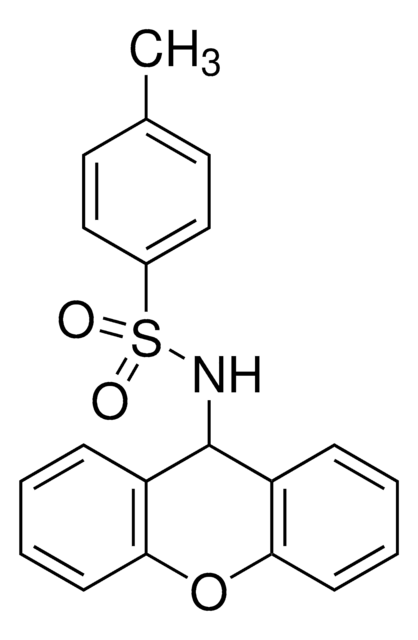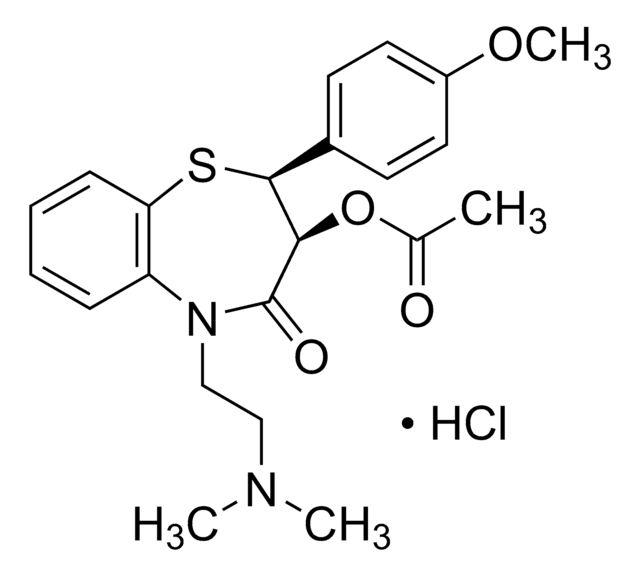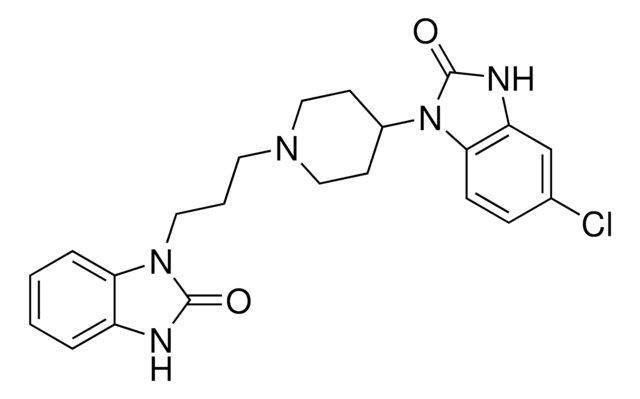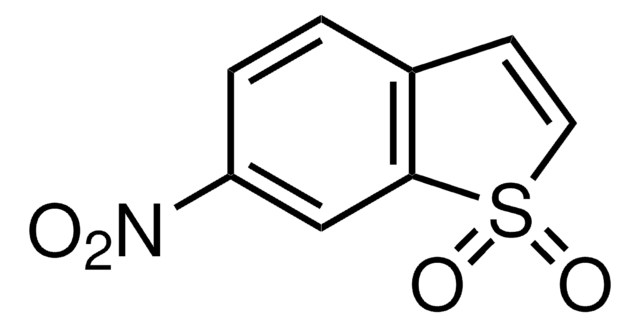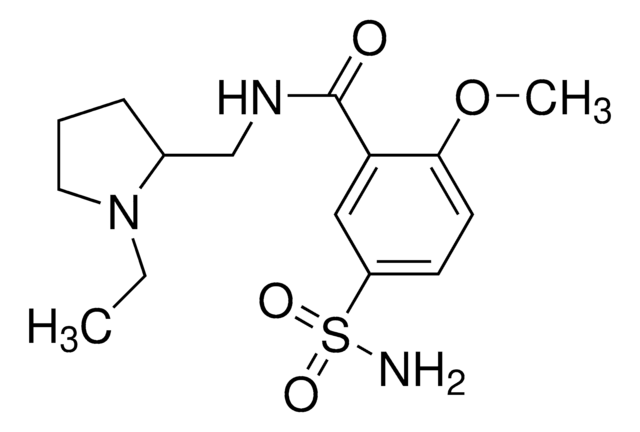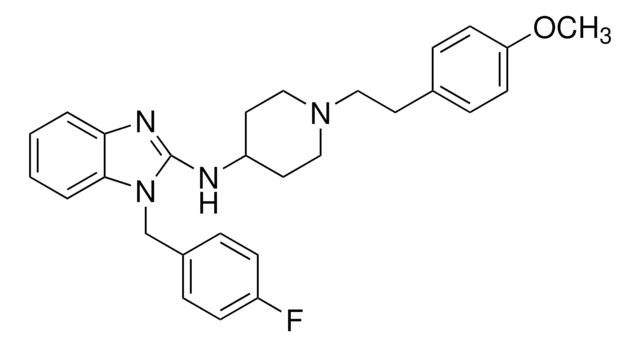P1793
Pimozide
≥98% (TLC), powder, D₂ dopamine receptor antagonist
Sinónimos:
1-[1-[4,4-bis(4-Fluorophenyl)butyl]-4-piperidinyl]-1,3-dihydro-2H-benzimidazol-2-one
About This Item
Productos recomendados
Nombre del producto
Pimozide,
Formulario
powder
solubilidad
DMSO: 18 mg/mL(lit.)
chloroform: 5 mg/mL
H2O: insoluble(lit.)
emisor
Teva
temp. de almacenamiento
2-8°C
cadena SMILES
Fc1ccc(cc1)C(CCCN2CCC(CC2)N3C(=O)Nc4ccccc34)c5ccc(F)cc5
InChI
1S/C28H29F2N3O/c29-22-11-7-20(8-12-22)25(21-9-13-23(30)14-10-21)4-3-17-32-18-15-24(16-19-32)33-27-6-2-1-5-26(27)31-28(33)34/h1-2,5-14,24-25H,3-4,15-19H2,(H,31,34)
Clave InChI
YVUQSNJEYSNKRX-UHFFFAOYSA-N
Información sobre el gen
human ... ABCB1(5243) , CACNA1G(8913) , CYP3A4(1576) , DRD1(1812) , DRD2(1813) , DRD3(1814) , DRD4(1815) , DRD5(1816) , HTR2A(3356) , HTR7(3363) , KCNH1(3756) , KCNH2(3757) , OPRD1(4985)
mouse ... Abcb1a(18671) , Abcb1b(18669)
rat ... Scnn1g(24768)
¿Está buscando productos similares? Visita Guía de comparación de productos
Acciones bioquímicas o fisiológicas
Características y beneficios
Elija entre una de las versiones más recientes:
¿Ya tiene este producto?
Encuentre la documentación para los productos que ha comprado recientemente en la Biblioteca de documentos.
Los clientes también vieron
Nuestro equipo de científicos tiene experiencia en todas las áreas de investigación: Ciencias de la vida, Ciencia de los materiales, Síntesis química, Cromatografía, Analítica y muchas otras.
Póngase en contacto con el Servicio técnico